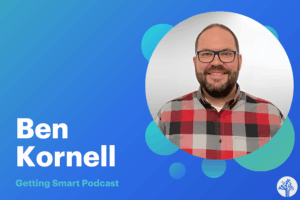Personalized Learning in 2016: What’s Working, What’s Missing

Let’s start with celebration. In the seven years since the 2009 iNACOL Symposium–the event that signaled a new era of blended and personalized learning in U.S. education– we’ve made a lot of progress.
Signs of Progress
1. Connectivity. Most communities have made great progress on broadband connectivity and student access devices.
2. Emerging Framework. Christensen Institute laid out what became the most widely accepted definition of blended learning emphasizing integration, voice and choice. Others began referring to the same thing as personalized learning to better reflect the aims.
The Learning Accelerator, formed four years ago to advance blended learning, produced a framework that clarified the use of data to personalize learning and enable competency-based progressions.

3. School Models. A growing number of networks and districts are combining personalized and project-based learning— individualized skill building to support what is often team-based community connected challenges with public products.
Individual teachers can do a lot to meet the needs of individual students, but a growing number of good schools promote common practices and multiyear progressions with a high level of teamwork. More district schools are joining networks like NAF and New Tech Network to benefit from common practices, lessons, and tools.
4. Platforms. Platforms have transformed the economy and are beginning to make it easier to personalized learning including mix and match content, social learning, and learner supports.
5. Tools. Adaptive learning tools (Dreambox, i-Ready), collaborative authoring tools (Google docs, Office 365), open resources (CK-12, Gooru), and lots of mobile apps are expanding learning opportunities.
6. Microcredentials. As discussed in a recent paper, micro-credentials are a digital form of certification that indicate when a person has demonstrated competence in a specific skill set. As a progress tracking and signaling system, micro-credentials are gaining traction in education since they offer a promising approach to personalized, competency-based professional learning.
Barriers
1. Narrow Framework. Most personalization is differentiation on an academic framework. We’re just beginning to understand the impact of a broader framework that considers cognitive factors and the traumatic effects of poverty. A new Digital Promise report suggests a broader framework.

2. Combining formative. While most students benefit from several forms of adaptive, curriculum embedded, teacher scored, and benchmark assessments, it’s still hard to combine all the formative feedback into easy to use real-time information.
3. Broader aims. We don’t yet have a common vocabulary and set of measures for social emotional learning and productive mindsets. We could use a new set of “look fors” (see our attempt on behalf of parents).
4. Tradition and policy. Federal and state policy (funding, assessment, accountability) and HigherEd admissions policies all reinforce traditional practices and reduce incentives for competency-based progressions
5. Technical difficulty. Developing a personalized learning school model is big design challenge; matching it with an integrated technology system remains daunting. (Platform-centric school networks will help)
6. Community engagement. EdLeaders need new tools for agreement crafting to support piloting and scaling innovative practices. We need improvement in stakeholder engagement on
- What graduates should know and be able to do;
- Why and how we use technology, for what purpose, and how we protect privacy;
- Community aspirations and the learning options the community values;
- How we monitor growth and how students progress.
We’ve made a great deal of progress in the last five years, but we’re still very early in the personalized learning revolution.
For more, see:
- Beware the Iconography Trap of Personalized Learning: Rigor Matters
- How Your Next Freshman Class Will Expect Personalized Learning
- Personalized PBL: Start With Senior Projects
Stay in-the-know with all things EdTech and innovations in learning by signing up to receive the weekly Smart Update. This post includes mentions of a Getting Smart partner. For a full list of partners, affiliate organizations and all other disclosures please see our Partner page.






0 Comments
Leave a Comment
Your email address will not be published. All fields are required.